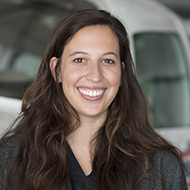Into thin air
Beware density altitude

We’re taught the basics even if we don’t have to contend with very high density altitudes in our day-to-day flying. But what we’re typically taught can be a significantly limited view on the hazards of high density altitude flying.
Sometimes, the only performance factor we consider is how density altitude will affect takeoff and landing. We’ll need more runway for both because the engine won’t make as much power, the wings won’t make as much lift, and our true airspeed will be higher. Takeoff is only one part of the go/no-go decision though we often think of it as the deciding factor.
Just because you can take off doesn’t mean that a flight can be accomplished safely. There’s also your climb performance, climb gradient, turn radius, true airspeed, and other performance factors to consider that are easy to forget if you fixate on takeoff and landing. If the airport is reporting an 8,000 feet plus DA, guess what? You’ll likely be cruising in at a density altitude above 10,000 feet. What’s your service ceiling? Do you really want to fly at the altitude where your airplane can’t climb anymore? Probably not.
The cooler months are a good time to explore your airplane’s performance (and your skill limits), what you feel comfortable with, and what’s safe. As it gets warmer, take notes on how that performance and your comfort level changes with the seasons.
Unfortunately, not all pilots prepare sufficiently for the potential dangers of high density altitude before they’re dealing with it in real time. In the early evening of July 3, 2021, two pilots in a newly purchased Beechcraft Bonanza G36 departed Aspen, Colorado, for their home base on the East Coast. They planned to cross the Sawatch Mountains—with peaks topping 14,000 feet—after an initial climb out of Aspen.
The AOPA Air Safety Institute team follows the Bonanza’s likely encounter with high density altitude—an inherent hazard in high terrain significantly degrading aircraft performance. Deceptively upsloping terrain would leave no escape for the flatland pilots facing the canyon trapping them. airsafetyinstitute.org/ACS/IntoThinAir
+ Density altitude training tip: Either with your CFI or on your own, look at the density altitudes of these airports. Calculate your performance for takeoff, landing, and climb. Then, calculate performance at maximum gross weight. Would you feel comfortable flying to or from these fields?
Big Bear City Airport (L35)
McCall Municipal Airport (MYL)
San Angelo Regional Airport (SJT)
Flagstaff Pulliam Airport (FLG)
Furnace Creek Airport (L06)

 On a November afternoon, GA pilot Henry Coffeen was practicing aerobatic maneuvers when he experienced a fire in the cockpit of his Edge 540.
On a November afternoon, GA pilot Henry Coffeen was practicing aerobatic maneuvers when he experienced a fire in the cockpit of his Edge 540.

